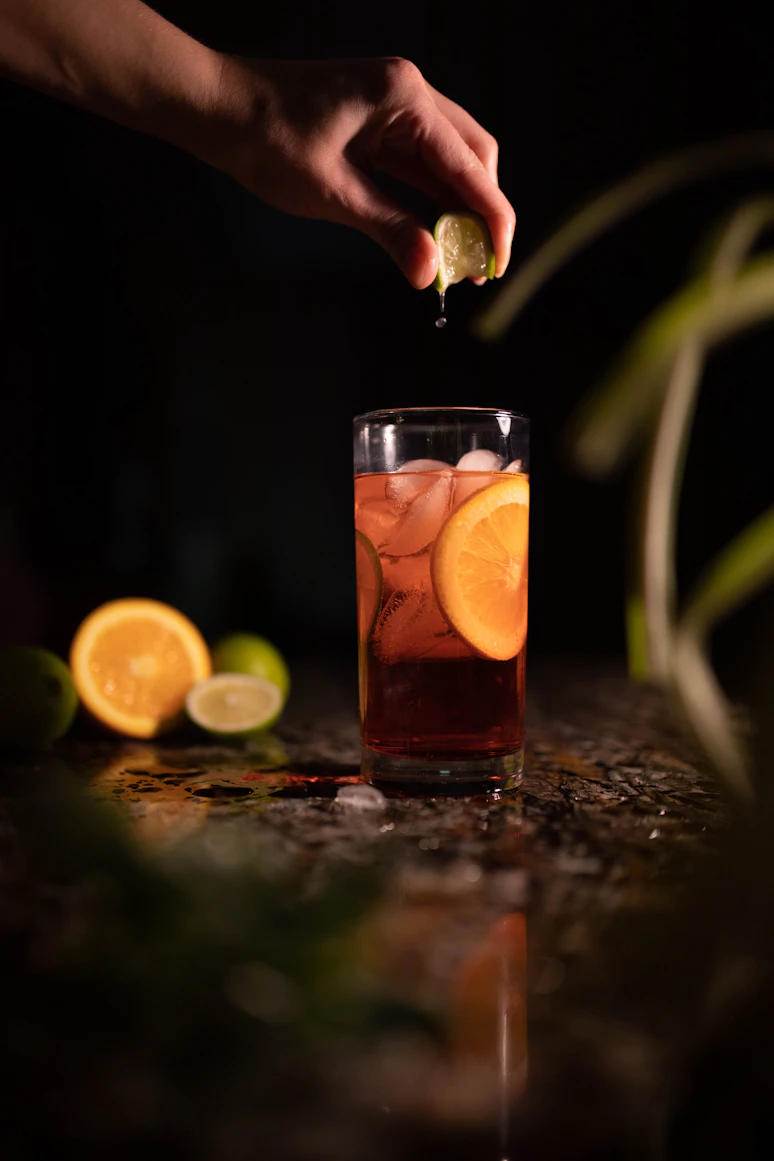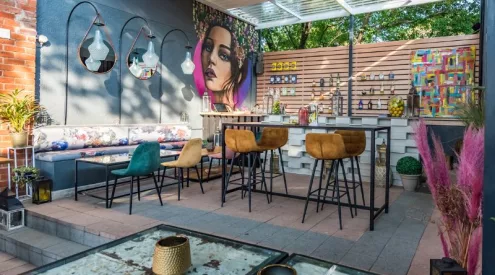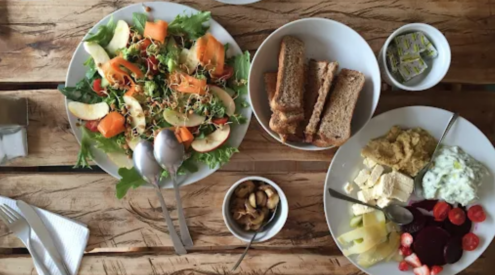As I ran out of the tunnel at Ellis Park, a fire extinguisher under one arm and an industrial-grade rubber mat under the other, the only thought in my mind was: “˜Has anyone checked if these things really are fire-proof?’ If they weren’t, it was too late to worry about it. If the braai blew over and our “˜fire-proof’ mats went up like a packet of blitz, I just had to hope I wasn’t going to be the guy explaining the six-foot scorch mark to the already-stressed grounds manager. In a matter of hours he had a Super 15 rugby match going live across the world and it had taken serious negotiation to secure our one-hour, crack-of-dawn window.
This wasn’t a braai, it was a military exercise. We had just one chance to pull it off and secure yet another coup in a succession of unlikely victories: to braai on the exact spot where Joel Stransky drop-kicked us into World Cup glory on that memorable day in 1995. If we burnt a hole in this guy’s immaculate grass, a firing squad seemed a very real possibility.
With Jan kitted out in his replica Bok gear and the rest of us charging about with our portable braai, charcoal (wood had been forbidden), cameras and rubber mats, we must have made an unnerving sight. To compound matters, none of us had actually checked exactly where the drop goal had been struck and the already-frenetic scene became even more crazed as laptops and phones were whipped out and we desperately searched YouTube for a clip to point us in the right direction. Eventually we settled on a spot, put down our hopefully protective mats and got the braai on the go. I can only imagine the rapidly escalating anxiety from the sidelines as Jan got to work on replicating Stransky’s immortal kick for the cameras, slicing one failed drop goal after another past the smoldering, boerie-laden fire. (I stopped counting at his 10th attempt, but he eventually got it on target, if not actually over the bar).
An hour later it was over. There wasn’t a single errant coal (we never did find out if those mats really work) and it had been another resounding success for the inaugural Braai4Heritage Tour of South Africa. We were three weeks into our nationwide expedition and, although tired and perhaps suffering from a mild form of scurvy, things were on track. We were braaiing and travelling and braaiing some more. Life doesn’t get much better than that.
But I’m getting ahead of myself. Perhaps you’ve not heard of the Braai4Heritage Tour or of Jan Scannell, otherwise known as Jan Braai, the man behind National Braai Day. It’s been six years since Jan embarked on his mission to get all 50 million South Africans braaiing together on 24 September and although his dream has gone from strength to strength, his ultimate goal is huge and not something that happens overnight.
“˜The Irish have St Patrick’s Day and the Americans have the Fourth of July – even the Aussies have Australia Day – but in this country, despite all our public holidays, we don’t have a single day that truly unifies us as South Africans,’ Jan explained when we first met to discuss the tour.
“˜The Braai4Heritage Tour will travel the length and breadth of South Africa,’ he continued, “˜visit some of the most beautiful and significant heritage sites it has to offer, and braai with the locals who live near them. The link between heritage and the braai is there; I want to strengthen it and, one day soon, have National Braai Day officially recognised as South Africa’s iconic national holiday.’
Travelling 10 000 kilometres in 40 days around South Africa, visiting 40 of our greatest heritage sites, including all eight Unesco World Heritage Sites, had my mouth watering. Throw in a braai every day and you’d have had to crowbar me away from the deal. Six months later, we were ready to hit the road – six guys, two bakkies and a helluva lot of braaivleis ahead of us.
Our route took us from Cape Town, through Stellenbosch, up the West Coast, from one hospitable host to the next. From Kleinzee and Port Nolloth, we journeyed through the Richtersveld, with lamb and steak braais on the banks of the Orange River in Augrabies and Upington. Kimberley, Bloemfontein, the Vredefort Dome, Soweto and Pretoria soon disappeared in braai-smoke behind us and on we drove, through the Soutpansberg to Mapunguwe, before heading back south through the dry Lowveld and on to the high green slopes of Graskop and Pilgrim’s Rest. Pretoriuskop, the oldest rest camp in the Kruger National Park, followed, then Sterkfontein and Swartkrans caves before finally arriving with our fire extinguishers and rubber mats at Ellis Park that Saturday morning. Once, sometimes twice – and on one memorable occasion, three times – a day we braaied.
Jan has a few braai tricks up his sleeves, but this tour wasn’t about his skills with the tongs (which was lucky because we forgot to pack any). It wasn’t a case of marching into town with a half-barrel and a pile of steaks and opening the Jan Braai cooking roadshow. It’s one thing to assert to yourself and the world that all South Africans love to braai, but you have to get out there at some point and see it first-hand.
We saw it and I can confirm: South Africa is a nation of braaiers. Whether it’s kabeljou on the West Coast, kudu fillet in the Northern Cape, lamb potjies in the Soutpansberg or tshisa nyama in Soweto, everywhere we went we were surrounded by braais and happy braaiers. When you’re standing around a fire, chatting and watching the meat (or vegetables – let’s be clear, you can braai veggies too), it’s hard not to have a good time.
After our Ellis Park braai on day 21, we set off back towards the coast through Vereeniging and Sharpeville to Spioenkop, then Nongoma, the royal and spiritual capital of the Zulu people. Our next stop was St Lucia for a memorable night of tossing fresh, ginger-and-lemon-basted prawns on the fire and laughing our way to another painful, bleary-eyed start the next morning.
We ate curry in Durban, went surfing and followed it up with a braai at the Shark Tank with the Sharks Rugby team. At Sani Pass, we braaied at the highest pub in Africa and hiked into the foothills of the Drakensberg to take in the world-famous San rock art. Next it was Qunu, birthplace of Nelson Mandela, then Graaff-Reinet (voted South African town of the year in 2010) and Knysna for more oysters than I’d ever seen before.
None of these destinations were random. Jan was at pains to pick each location deliberately for its heritage and what it promises for the future of our country. As he pointed out to me more than once: “˜National Braai Day is about heritage that looks forward. Heritage is a living, growing thing. It has a past, sure, but it also has a present and a future – it’s not just a tiptoed journey through the diffi cult history now behind us.’ In this sense, Kimberley’s Big Hole is a heritage site, as is Grahamstown, where so many great South African journalists have begun and will begin their careers. The Vredefort Dome, the largest and oldest meteorite impact site on Earth, is another. There are so many heritage sites in South Africa we could easily still be on the road if we’d had a mind to see them all. As it was, by the time we hit the southernmost tip of Africa at Cape Agulhas, we were near worn out. Sick of braaiing? Actually no, but 38 days is a long time on the road and there was just one thing keeping us going: our final braai on Robben Island.
With the braai at Ellis Park, we’d achieved the near impossible, but getting permission to light a fire on Robben Island, the eighth and final World Heritage Site on the tour, was a leap in bureaucracy of monumental proportions. It’d be libelous to go into details, but suffice to say that as we arrived at the Waterfront in Cape Town it was still touch and go and, with the ferries on strike and a six-metre swell pumping the coastline, even Jan’s best-laid plans seemed set to desert us. But then, as I was coming to understand, it seems nothing gets in the way of Mr Braai when he puts his mind to it. The seas didn’t exactly part, but the ferry did finally sail and it was with big smiles that we docked at Robben Island, bags of wood in hand and steaks and bubbly in the cooler box.
There aren’t many who can claim to have braaied at all eight South African World Heritage Sites and, although this was no record-breaking attempt, it was uplifting to have been part of something so epic and visionary. As Jan slapped steaks on the fire and we toasted the conclusion of the tour, I was left with the strong feeling that this wasn’t an end at all.
As Jan put it to the cameras on that bright, sunny morning, “˜What we do today is the heritage of our future. One day, when the whole of South Africa, including our grandchildren and their families, are all braaiing on the same day once a year, they’ll be looking back on the things we do today as forming an integral part of their heritage into their future.’
I can’t help agreeing with him. The man can’t kick a rugby ball to save his life, but his passion for uniting South Africans through shared activity is infectious “¦ or perhaps contagious. Forty-six braais in 40 days certainly hasn’t put me off this great South African tradition and I know that I, like Jan, will be lighting a fire this National Braai Day. And I won’t be setting an alarm clock for the following morning either.
















